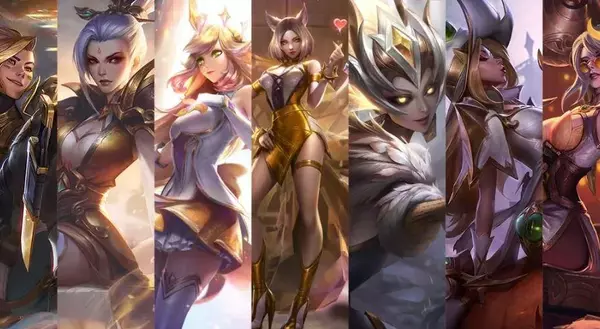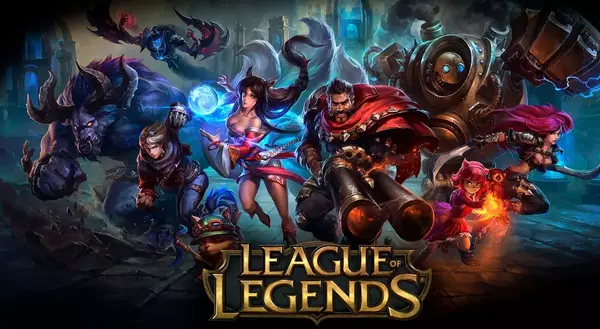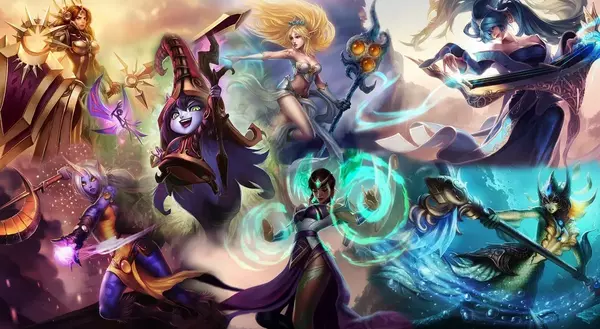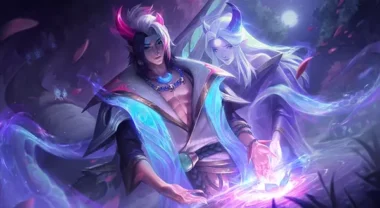Introduction
League of Legends (LoL), Riot Games’ flagship MOBA, has faced a recurring issue over its years of updates: “power creep.” Power creep occurs when new champions or updates raise the power level of the game, leaving older champions comparatively weaker. This imbalance affects everything from casual play to ranked and competitive matches. The following article takes a deep look into power creep in League of Legends, how it impacts players, and ways Riot Games might address it.

The Power Creep Problem in League of Legends
Power creep in League of Legends is noticeable when newly released champions outshine existing ones in strength and complexity. Riot Games consistently introduces new champions to keep gameplay engaging, but the result can often be an imbalanced roster where only the latest champions excel.
Causes of Power Creep
- Enhanced Kits: New champions are frequently designed with complex and versatile abilities.
- Stronger Stats: Modern champions often have boosted stats, making older champions feel outdated.
How It Affects the Game
This makes certain older champions obsolete, as they lack the power and adaptability of newer characters, reducing their effectiveness in matches.
Meta Shifts and Power Creep
The “meta” in League of Legends represents the dominant strategies and champions within the current patch. When new champions or patches are released, the meta shifts in favor of these updates, further contributing to power creep.
Meta’s Role in Imbalance
- Frequent Updates: Constant updates quickly alter champion balance, leaving older champions behind.
- Popularity of New Champions: Players often flock to champions that excel in the meta, sidelining older champions.
Competitive Impact
Power creep can narrow the champion pool in competitive play, as only the most recent or strongest champions remain relevant in the current meta.
Riot Games’ Release Schedule and Power Creep
Riot’s champion release schedule drives player engagement but also accelerates power creep. The rapid pace of introducing new champions often leaves little time for balancing, resulting in overpowered champions.
Innovation vs. Balance
- High Expectations for New Champions: Riot aims to make each new champion unique and compelling, but this can disrupt balance.
- Minimal Adjustment Period: Frequent releases don’t allow enough time for the meta to stabilize, leaving older champions at a disadvantage.
Balancing Challenges
While Riot has made efforts to balance releases, rapid champion introductions can make it difficult for older champions to stay competitive.
Effects of Power Creep on Players and Gameplay
Power creep affects both casual and ranked players, forcing them to adapt to new champions and tactics constantly. For players who favor older champions, this can be frustrating, as those champions may not perform as well against newer, more powerful ones.
Impact on Casual Players
- Loss of Favorite Champions: Players who favor older champions may feel forced to switch to new ones for better performance.
- Less Gameplay Diversity: Power creep narrows the pool of viable champions, reducing gameplay variety.
Impact on Ranked Players
For competitive players, using only the most powerful champions becomes essential for ranking up, limiting their strategic options.

Financial Incentives and Power Creep
The design and release of powerful champions are also financially advantageous for Riot Games. Players are more likely to purchase new champions and their skins, especially if these champions dominate the meta, but this can also create tension within the player base.
Monetization Strategies
- High Skin Sales for Strong Champions: Popular champions often lead to higher skin sales, encouraging Riot to focus on these characters.
- Concerns Over “Pay-to-Win”: Players may see power creep as a means for Riot to boost sales, affecting trust in the game’s fairness.
Balancing Fairness with Revenue
Riot needs to balance monetization with maintaining a fair and competitive environment to preserve player trust and loyalty.
Community Response to Power Creep
The League of Legends community is vocal about power creep, with many players calling for a more balanced release strategy and better support for older champions.
Common Community Feedback
- Buffs for Older Champions: Many players want to see older champions rebalanced to remain viable.
- Longer Gaps Between Releases: Players often advocate for slower release cycles to allow time for balancing.
Riot’s Reaction to Community Feedback
Riot Games has responded by reworking older champions and updating stats, though power creep remains a challenge in such a large roster.
Riot’s Attempts to Address Imbalance
Riot has taken various approaches to counter power creep, from reworking older champions to providing regular patches. Yet with over 160 champions, keeping every character balanced is a monumental task.
Reworking Older Champions
- Modernizing Abilities: Riot often updates abilities for older champions, making them relevant to current gameplay.
- Stat Adjustments: Frequent adjustments help keep champions in line with the rest of the roster, though balance is difficult to maintain.
Limitations of Reworks
Even after reworks, some older champions struggle to keep up with the intricate abilities of newer champions, leaving them underplayed.
Potential Solutions to Power Creep
Addressing power creep requires a multi-faceted approach. Riot could consider slower release cycles, regular updates for older champions, and designing balanced abilities for new champions.
Slowing the Release Cycle
- More Focus on Balance: Releasing fewer champions allows for more extensive testing and balancing.
- Player Involvement: Incorporating community feedback could help Riot understand how power creep impacts gameplay.
Buffs for Older Champions
Focusing on keeping existing champions competitive could allow for a richer variety of gameplay and more balance across the roster.
Ensuring Long-Term Balance in League of Legends
To ensure League of Legends remains fair and competitive in the long run, Riot needs to prioritize balance. A fair game encourages diverse playstyles and promotes a healthy community.
Building a Fair Competitive Environment
- Improving Retention Rates: Balanced gameplay allows players to enjoy their favorite champions, leading to better player retention.
- Supporting Community Growth: A fair game makes League of Legends more attractive to new players, which benefits the community as a whole.
Benefits of a Balanced Roster
A balanced champion pool creates a more diverse and strategic gaming experience, fostering the depth of play that has made League of Legends successful.

Conclusion
Power creep is a critical issue in League of Legends, challenging Riot Games to find a balance between innovation and fairness. While Riot has taken steps to address this issue, a greater emphasis on long-term balance and stability would strengthen League of Legends as a competitive and engaging game. By valuing balance over frequent releases, Riot can sustain the game’s competitive integrity and maintain the trust of its player community.


